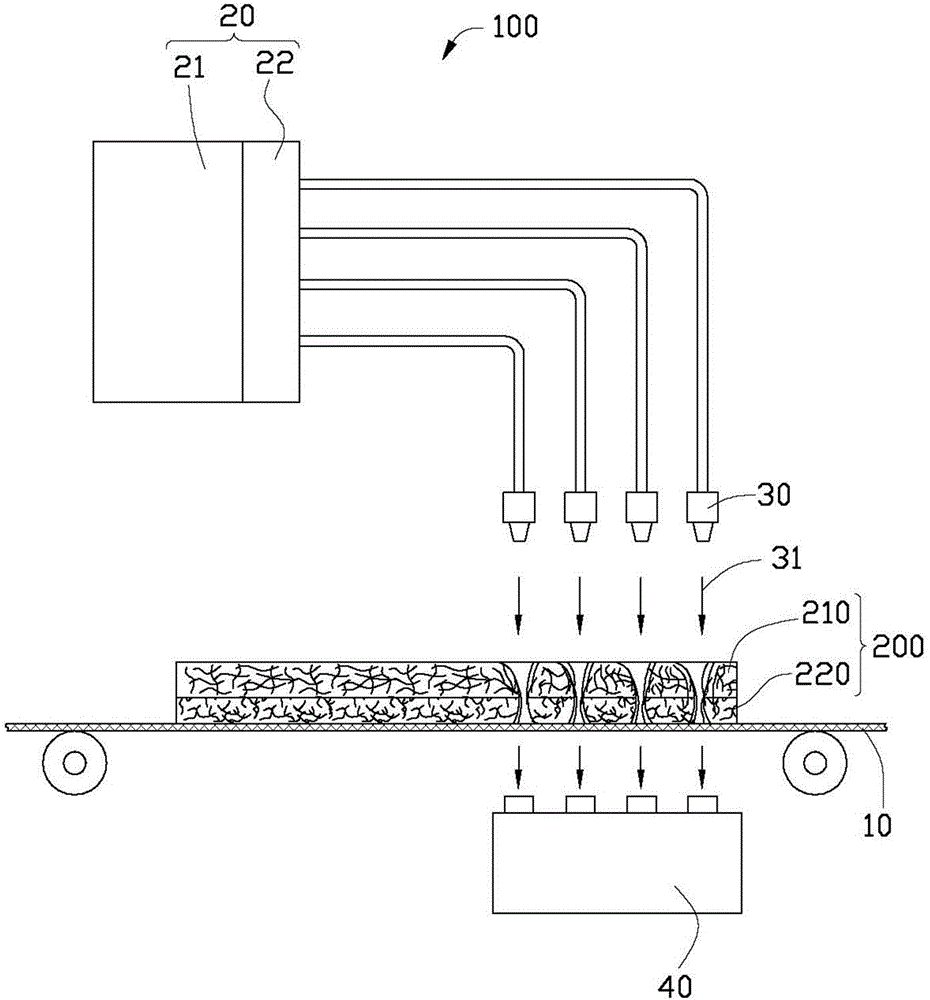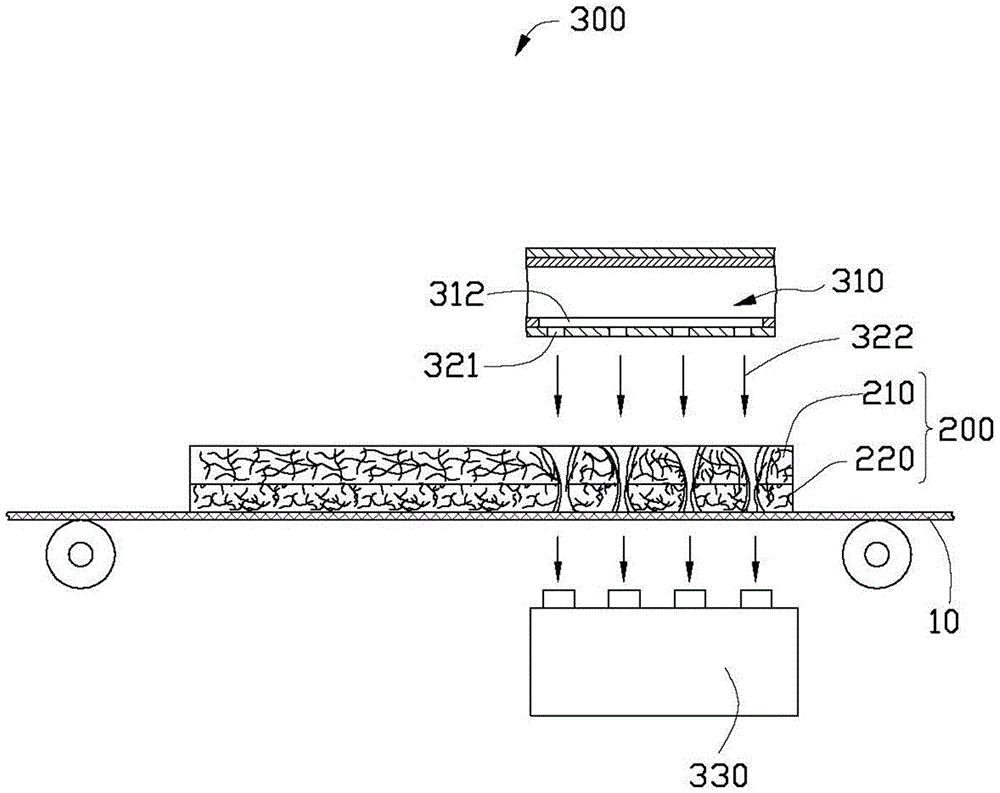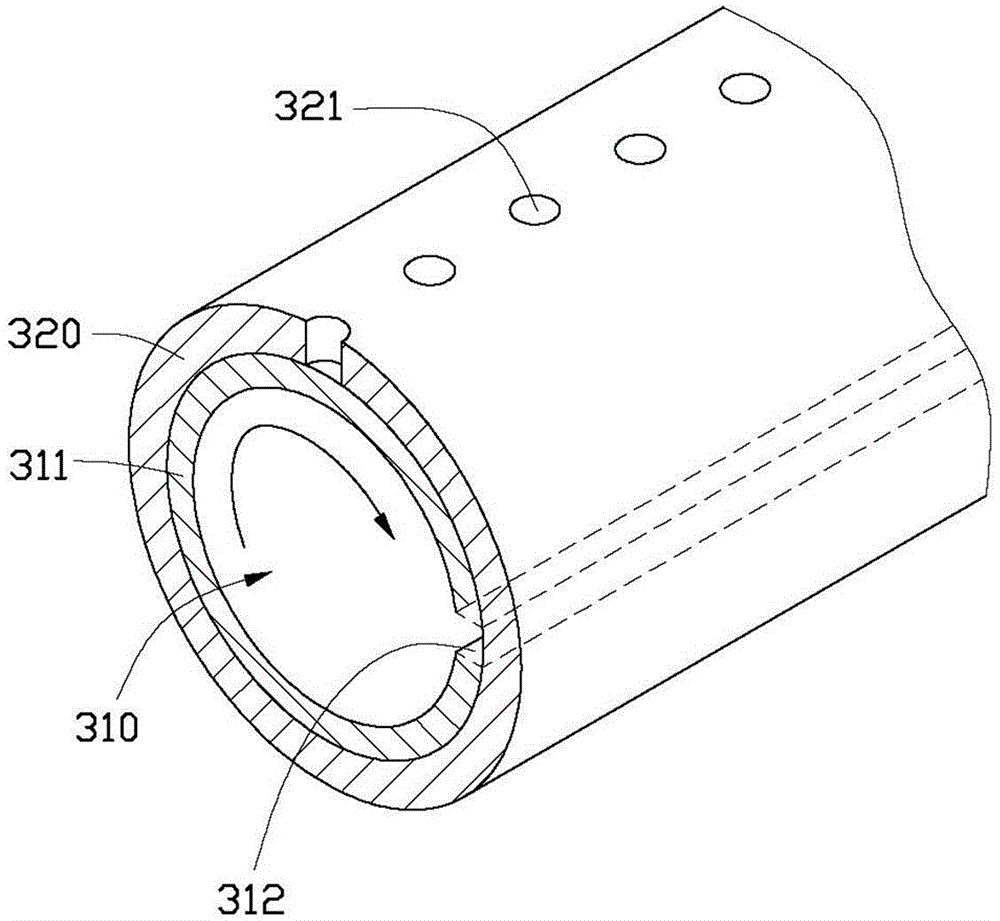Solidifying device and process for composite non-woven fabrics
A non-woven fabric and equipment technology, which is applied in the field of composite non-woven fabric consolidation equipment and technology, can solve the problems of non-woven fabric performance degradation, sticking into sheets or strips, affecting the softness and water absorption of non-woven fabrics, etc. Achieve the effect of avoiding sticking into sheets or strips
- Summary
- Abstract
- Description
- Claims
- Application Information
AI Technical Summary
Problems solved by technology
Method used
Image
Examples
Embodiment Construction
[0016] See figure 1 As shown, the composite non-woven fabric consolidation equipment 100 provided by the first embodiment of the present invention is used to consolidate the non-woven fabric fiber composite body 200, and the non-woven fabric fiber composite body 200 includes the first hot-melt fiber layer 210 and a hydrophilic fiber layer 220 stacked under the first heat-melt fiber layer 210 . The composite non-woven fabric consolidation device 100 includes a supporting mesh curtain 10 , a hot air source 20 , a plurality of injection ports 30 and a vacuum device 40 .
[0017] The supporting net curtain 10 is used to support the non-woven fiber composite 200 and transport it at a certain speed, so as to facilitate the consolidation of the non-woven fiber composite 200 by the composite non-woven consolidation device 100 Knot handling.
[0018] It can be understood that, in the present invention, the supporting mesh curtain 10 may be a part of the nonwoven fabric manufacturing ...
PUM
 Login to View More
Login to View More Abstract
Description
Claims
Application Information
 Login to View More
Login to View More - R&D
- Intellectual Property
- Life Sciences
- Materials
- Tech Scout
- Unparalleled Data Quality
- Higher Quality Content
- 60% Fewer Hallucinations
Browse by: Latest US Patents, China's latest patents, Technical Efficacy Thesaurus, Application Domain, Technology Topic, Popular Technical Reports.
© 2025 PatSnap. All rights reserved.Legal|Privacy policy|Modern Slavery Act Transparency Statement|Sitemap|About US| Contact US: help@patsnap.com



